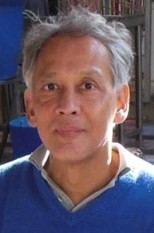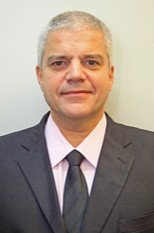Energy Still in Transition - The Challenges to Operating Power Systems Still Growing
 |
 |
 |
||
| Christopher Norlander | Danny Klaar | Jayme Darriba Macêdo |
We continue with the Energy Transition. How far will we have to apply the term "transition", is a difficult question to answer at this moment. Technological innovations continue to generate options and tend to allow for important changes in the electricity sector scenario and, as a result, new challenges continue to appear.
It is a fact that changes in the global political, economic, and social context interfere with what seemed to be the normal path of the transition that was being established in recent years. However, for the teams dedicated to the operation of electrical power networks, these deviations from context only add new difficulties and challenges to be overcome with new knowledge to be developed and disseminated.
However, these alterations that appear to be temporary do not interrupt the evolution of new technologies from the generation part of the power systems, passing through transmission improvement technologies and, mainly, deep alterations in the distribution part, changing the behavior of the net load of not always predictable way.
And the concept of end-to-end operation of power systems offers the specialists of the Study Committee C2 a wide field of action and research, in search of the best results for reliability, quality of energy supply and considering the cost of energy and the environmental issues involved.
With that, the year 2022 continued with excellent production on the part of SC.C2 with the publication of Technical Brochures from some Working Groups, but especially with the opening and continuity of works by three new groups.
Two of them have already been addressed in the previous publication of our Future Connections: the Joint Working Group C2/C5.06, titled ’’The Impact of Electricity Market Interventions by System Operators during Emergency Situations’’ and the Working Group C2.42, titled “The impact of the growing use of machine learning based Artificial Intelligence in the operation and control of Power Networks from an Operational perspective”.
To talk about the third new Joint Working Group, we start by exploring that in the spirit of the global energy transition to a more sustainable world, large numbers of offshore wind power are connected to the onshore grids which create (new) operational challenges for the (onshore) system operators. The technical possibilities to address when designing and operating such connections and the increasing complexity in the power system, among others, need to be investigated.
Then, the Joint Working Group C2/B4.43, titled “The impact of offshore wind power hybrid AC/DC connections on system operations and system design”, aims to investigate how system operators deal with the following topics:
- resilience (see WG B4.78 Cyber Asset Management for HVDC and FACTS) in the technical design of offshore wind power installations;
- multi-purpose and multi-vendor interconnectors (WG B4.85 – “Interoperability in HVDC systems based on partially open-source software).
Of course, in the current technological context, there is a wider range of issues that could be addressed such as considering the grid forming and black start capability offered by VSC HVDC/FACTS in the system operation. But, certainly, from other groups of the CIGRE Community, there are actions that address these other possibilities and whose interactions with this new JWG C2/B4.43 will be possible. In the case of the previous examples on VSC HVDC/FACTS, two new Working Groups have already been created by SC.B4 (B4.93 and B4.94) which are already starting their work.
Further focus will be on the understanding of the needed interaction between the technical design and the operational concepts for the offshore grid and the onshore grid where the following topics will be addressed:
- Requirements to cope with maximum power outage.
- Restoration after onshore and offshore disturbances.
- The way maintenance and outages are handled · operation of multi-terminal offshore AC/DC hybrid meshed grids with DC-breakers.
- Dynamic phenomena such as frequency and power swings (stability) and inertia.
- Harmonics and events that urge for quick ramping power.
The above topics will impact the design of the offshore grid in terms of topology, redundancy, protection schemes and requirements for overload conditions of assets.
Besides that, also relevant market design topics will be addressed.
In CIGRE TB 821 “Capabilities and requirements definition for power electronics-based technology for secure and efficient system operation and control” have been investigated and to a certain extend offshore design was considered as well.
The objective of the Joint Working Group is to investigate:
- How system operators and wind farm developers design and operate their infrastructure to the offshore wind power installations.
- Which practices exist – what are lessons learnt in practical examples.
- Ideas and investigations done for the future technical design and operation of their infrastructure to the offshore wind power installations and on the interaction with onshore grids.
The integration of the knowledge gained in a concise and compact Technical Brochure should help stakeholders decide how to design and operate the infrastructure to the onshore & offshore wind power installations.
The activities will focus on:
- Reviewing previous CIGRE (SC C2, SC B4, JWG C2/B4) and other work (for instance from ENTSO-E) in this domain.
- Survey the worldwide experiences with onshore & offshore wind power installations.
- Describe the impact experienced with already existing onshore & offshore wind power installations.
- Identify and describe best practices.
- Investigate possible strategies for future design and operation of the infrastructure to the onshore & offshore wind power installations. It is relevant that the JWG will consist of participants from power system operators and wind farm developers, vendors, consultants, and the academic world.
The kick-off meeting of the works already took place in November 2022 and the 2 days of meeting gave the JWG the opportunity to present and discuss in a common way looking at different angles on how not only operational challenges, but also regulatory issues differ from region, continent, or historical tradition.
Adding this work to everything else underway in the SC.C2 area not only increases the challenge but encourages the expert community to continue moving in line with the strategic technical perspectives and directions of CIGRE as a whole and the Study Committee in particular.
